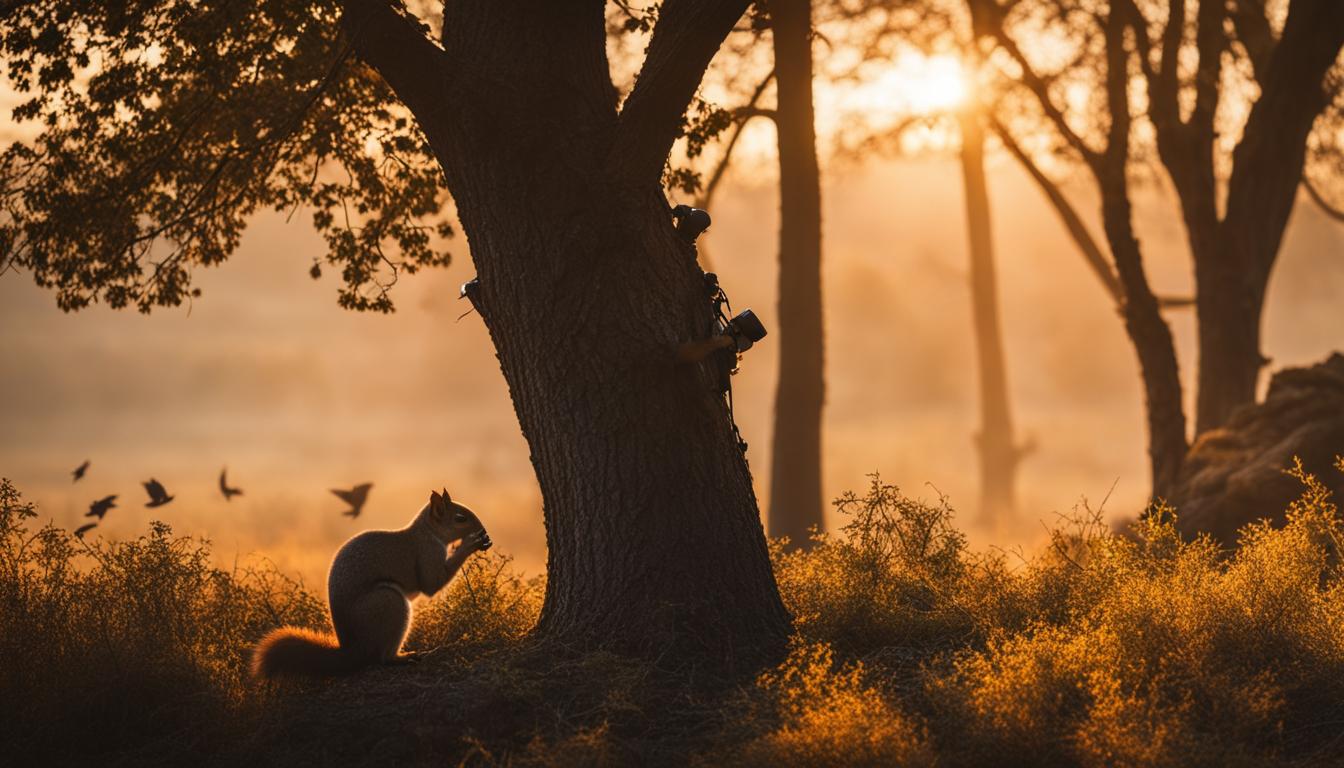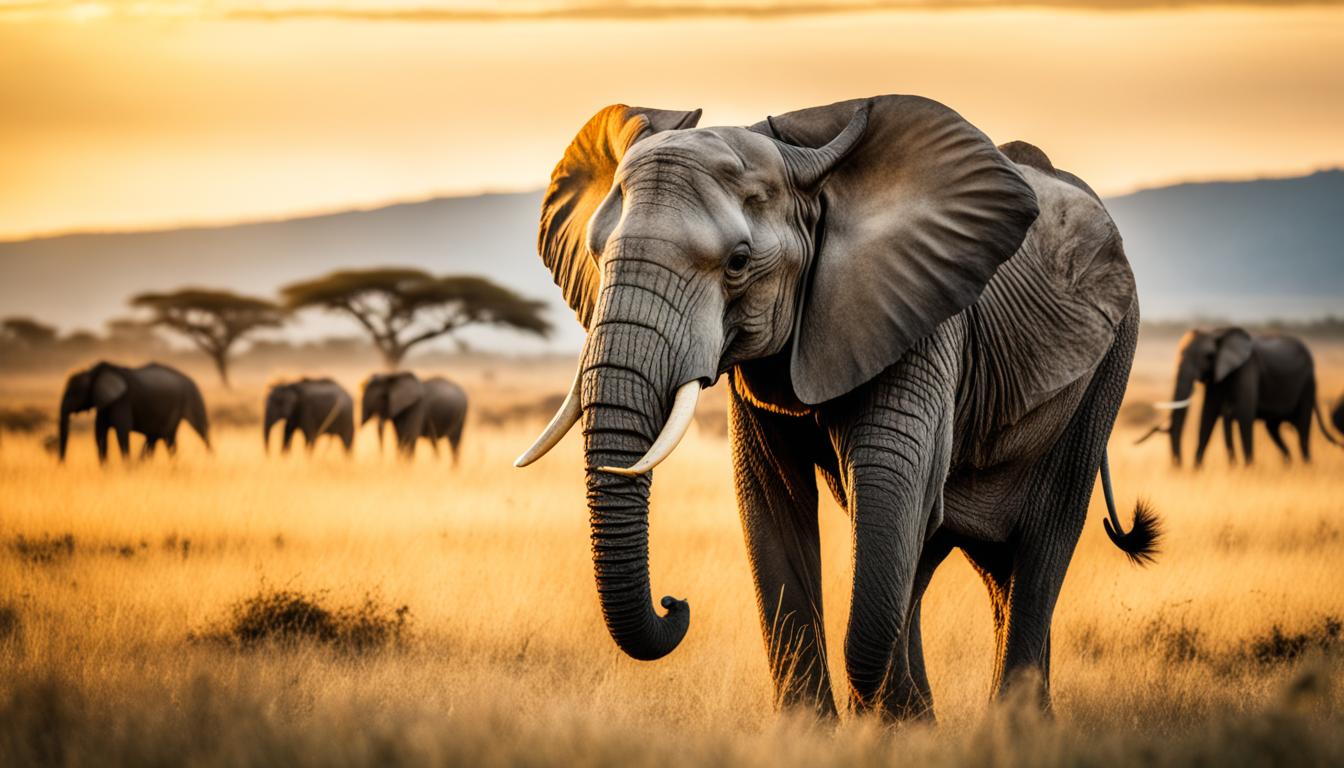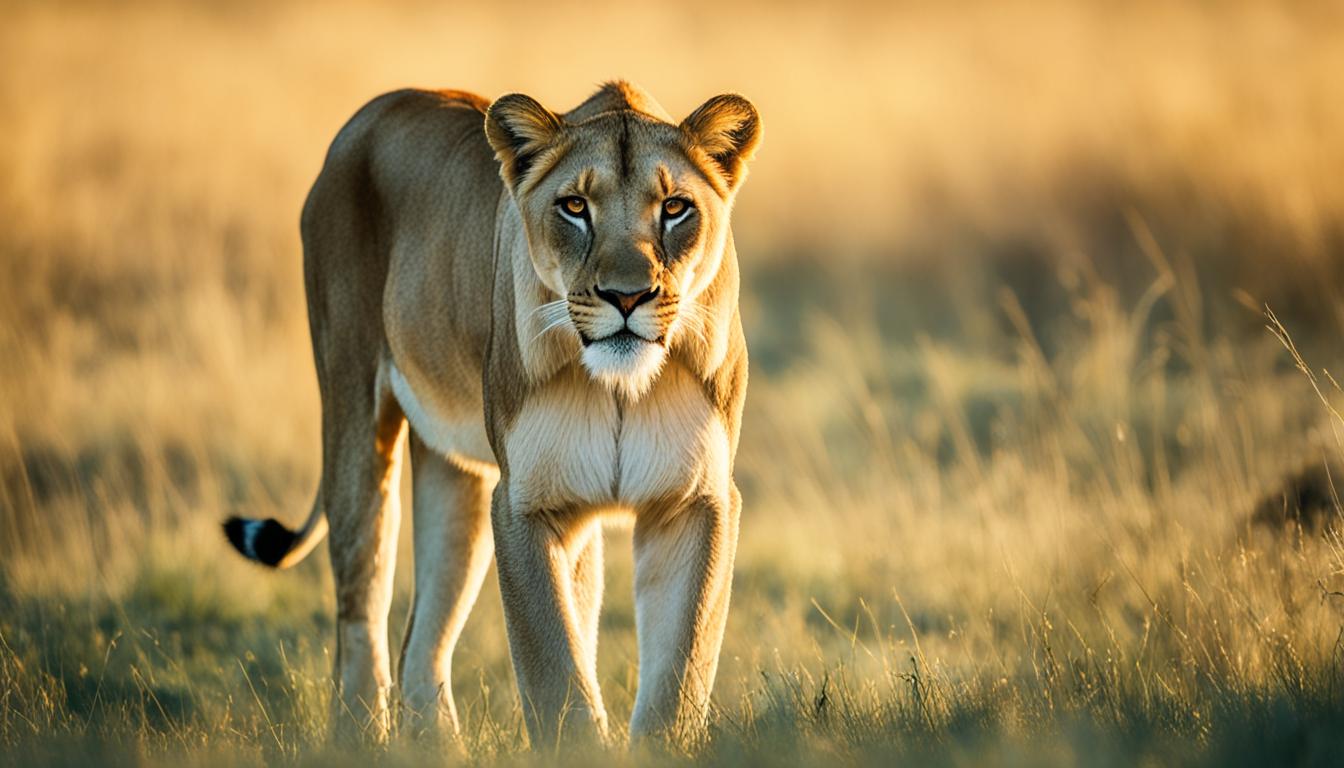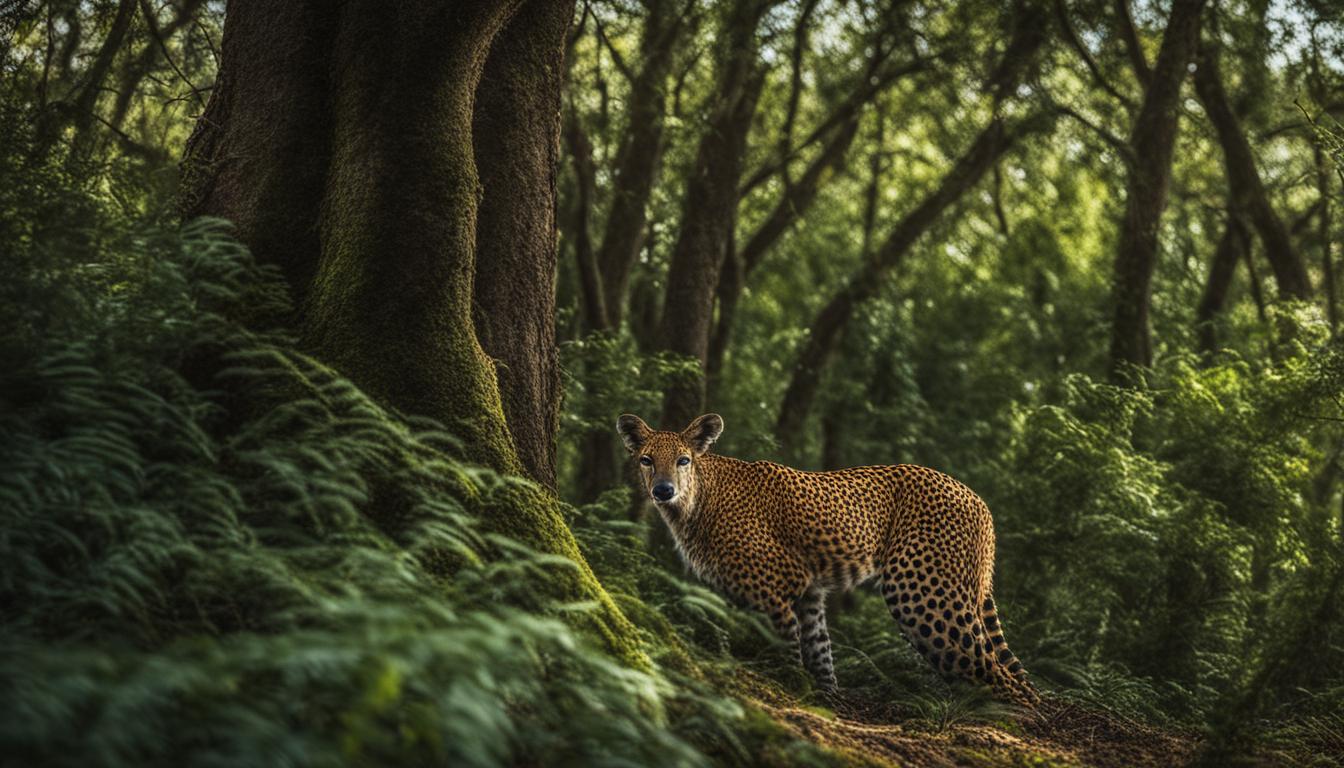In wildlife photography, the role of patience and persistence cannot be overstated. While having the right equipment and access to wildlife are essential, it is ultimately the ability to wait for the right moment and persevere through challenges that sets apart exceptional photographers from the rest. Wildlife photography is unique because photographers have little control over the subjects and moments they capture. They must be ready to seize opportunities in a blink of an eye. Lack of motivation can sometimes hinder photographers, but persevering through long hours, adverse weather, and limited opportunities is essential for success.
Key Takeaways:
- Patience and persistence are crucial in wildlife photography, as photographers often face challenges and empty-handed outcomes.
- Finding unique and interesting subjects is part of the challenge and excitement of wildlife photography, and opportunities can be found everywhere.
- While gear is important, understanding techniques such as animal behavior, camera settings, and composition can have a greater impact on the final result.
- Patience is crucial in waiting for the perfect moment to capture a subject in its natural habitat.
- Being patient and staying committed to a specific location or subject increases the chances of witnessing unique and extraordinary moments in nature.
Finding Wildlife Photography Subjects
When it comes to wildlife photography, the search for perfect subjects is a thrilling adventure. Wildlife can be found in a multitude of habitats, both in the wild and in captivity. While some may think that certain locations offer better opportunities for wildlife photography, the truth is that incredible subjects can be found everywhere, if we are willing to look carefully.
From the majestic big cats roaming the vast plains of Africa to the playful squirrels darting through urban parks, wildlife subjects are diverse and abundant. The challenge and excitement lie in finding unique and interesting subjects that captivate our audience.
Whether we explore the untamed landscapes of a national park, visit a well-established zoo, or simply wander through a local park, wildlife photography opportunities are waiting to be discovered.
Wildlife Photography Opportunities in Different Locations:
| Location | Description |
|---|---|
| National Parks | Immerse yourself in the beauty of nature and encounter a wide range of wildlife species in their natural habitats. Capture stunning images of animals in breathtaking landscapes. |
| Zoos and Wildlife Sanctuaries | Visit these establishments to photograph animals that may not be accessible in the wild. Zoos provide opportunities to capture detailed close-ups and study unique behaviors. |
| Urban Areas and Parks | Explore your own city’s green spaces or local parks to find unexpected wildlife moments. From playful birds in flight to squirrels foraging for food, wildlife can thrive even in the heart of the concrete jungle. |
Remember, wildlife photography is not confined to specific locations. The key is to open our eyes to the wonders around us, whether in a distant wilderness or right in our own backyard. With patience and a keen eye, we can find remarkable subjects for our wildlife photography pursuits.
Gear and Techniques for Wildlife Photography
While having top-of-the-line gear can enhance the quality of wildlife photography, it is not the sole determinant of success. Professional wildlife photographers can capture incredible images with basic equipment as long as they understand the techniques and principles of wildlife photography.
Understanding animal behavior is key to anticipating and capturing those decisive moments. By observing and studying your subjects, you can learn their patterns, movements, and habits, allowing you to be in the right place at the right time. This knowledge enables you to position yourself for the best angles and compositions, resulting in more impactful photographs.
Proper camera settings are essential in wildlife photography. Fast shutter speeds freeze the motion of animals, while a wide aperture creates a shallow depth of field, isolating the subject and creating a pleasing bokeh effect. In challenging lighting conditions, such as low light or high contrast, understanding exposure and using techniques like bracketing can help you achieve well-exposed images.
Composition plays a crucial role in wildlife photography. By utilizing techniques such as the rule of thirds, leading lines, and framing, you can create visually pleasing and engaging images. Experiment with different perspectives and angles to bring a fresh and unique perspective to your photographs.
Remember, it’s not just about the gear, but also about the skills, techniques, and creativity you bring to the table. Mastering these aspects will elevate your wildlife photography to new heights.
Recommended Gear for Wildlife Photography
| Camera Body | Lens | Accessories |
|---|---|---|
| Nikon D850 | Canon EF 100-400mm f/4.5-5.6L IS II | Tripod |
| Sony A9 II | Nikon 200-500mm f/5.6E ED VR | Remote Shutter Release |
| Canon 5D Mark IV | Sony FE 100-400mm f/4.5-5.6 GM OSS | Polarizing Filter |
Note: The recommended gear mentioned above is based on popular choices among professional wildlife photographers. It is important to choose gear that aligns with your specific requirements and budget.

Experimentation and practice will help you refine your techniques and find what works best for your style and subjects. Remember, wildlife photography is not just about capturing stunning images; it’s about telling stories, raising awareness, and inspiring others to appreciate and protect the natural world.
The Art of Waiting and Observing
Patience is a crucial virtue in wildlife photography. As photographers, we often find ourselves waiting for hours, sometimes in uncomfortable conditions, for the perfect moment to capture a subject in its natural habitat. It’s during these moments of patient observation that we can truly connect with the wild and capture remarkable images that tell powerful stories.
Blending into the environment and becoming one with nature is essential in wildlife photography. By immersing ourselves in the surroundings, we can gain insights into animal behavior and anticipate their movements. This allows us to be in the right place at the right time, ready to capture breathtaking shots that reveal the true essence of wildlife.
The Power of Observation
Observation is a fundamental skill for any wildlife photographer. By keenly observing the animals, their interactions, and the environment, we can anticipate their behavior and capture extraordinary moments. This requires a sharp eye for detail and an understanding of animal habits and patterns.
“In nature, light creates the color. In photography, light creates the emotion.” – Hans Hoffman
Waiting for the decisive moment is an art in itself. It takes practice to recognize that fleeting moment when all the elements align perfectly, allowing us to capture an image that conveys the essence of the wildlife we are photographing. It’s in these instances that we can freeze a magical moment for eternity, telling stories through our photographs.
The Importance of Patience
Having patience with ourselves is as important as having patience with the wildlife. Learning and mastering wildlife photography takes time and practice. It’s easy to become frustrated when things don’t go according to plan or when we don’t immediately capture the images we envision. However, by embracing patience, we can grow as photographers and artistically express the beauty of nature.
| Benefits of Patience in Wildlife Photography | Wildlife Photography Tricks |
|---|---|
| Allows for a deeper understanding of animal behavior | Use high-speed continuous shooting mode to capture fast-paced action |
| Increases the chances of witnessing unique and extraordinary moments | Practice slow and deliberate movements to avoid startling the wildlife |
| Creates opportunities to capture intimate and candid portraits | Use long lenses and tripods for stability and to maintain a safe distance from wildlife |
| Fosters a sense of connection and empathy with the natural world | Study the habitat and behavior of the wildlife beforehand to anticipate their movements |
In wildlife photography, patience is truly a virtue. It allows us to immerse ourselves in nature, observe the intricacies of animal behavior, and capture stunning images that evoke emotions and inspire others. So, let’s embrace the art of waiting and observing, and let patience guide us in our quest to capture the wonders of the wild.
The Battle of Will vs. FOMO
Wildlife photography is a constant battle of will. As photographers, we often find ourselves at a crossroads, torn between staying and waiting for a potential shot or giving in to the Fear of Missing Out (FOMO) and chasing after other sightings. It’s a tough decision, but the most successful wildlife photographers understand the value of patience and persistence.
Staying committed to a specific location or subject increases our chances of capturing those unique and extraordinary moments in nature.
As tempting as it may be to give in to FOMO and move on to the next location, we must resist the urge. Patience and persistence are key to capturing those elusive wildlife moments that make our photographs truly remarkable.
“The difference between a good wildlife photographer and a great one is often the willingness to wait and endure,” says renowned wildlife photographer, Anne Cooper. “The most extraordinary moments unfold when you least expect them. It’s a battle against our own restlessness, but it’s worth it.”
By staying committed and investing the time to wait for that perfect shot, we open ourselves up to incredible opportunities. While others may miss out on those rare and magical moments, we have a front-row seat to witness nature’s wonders and capture them forever through our lenses.
Let’s not underestimate the power of our will and the impact it can have on our wildlife photography.
The Dilemma of FOMO
It’s no secret that FOMO can be a powerful force, especially in the fast-paced world of wildlife photography. We see others sharing breathtaking images of rare species or extraordinary behaviors, and the fear of missing out can gnaw at us. However, succumbing to FOMO often leads to fragmented experiences, scattered shots, and missed opportunities.
Staying focused on a specific location or subject enables us to build a deeper understanding and connection, increasing our chances of capturing those captivating wildlife moments.
The Rewards of Patience and Persistence
When we choose patience and persistence over giving in to FOMO, the rewards can be incredible. Our dedication pays off when we witness and capture those elusive moments that others can only dream of. The hours spent waiting become worth it when we bring home images that evoke emotions and transport viewers into the heart of nature.
While battles against FOMO may be challenging, the rewards of patience and persistence in wildlife photography far outweigh the temptations to give in.
| FOMO | Patience and Persistence |
|---|---|
| Fragmented experiences | Deeper understanding and connection |
| Scattered shots | Capturing captivating wildlife moments |
| Missed opportunities | Rewarding and extraordinary shots |
In the end, the battle of will versus FOMO is one that we, as wildlife photographers, must face. It’s a continuous struggle, but by embracing patience and persistence, we enhance our chances of capturing those awe-inspiring wildlife moments that leave a lasting impact.

The Magic of Being in the Right Place at the Right Time
Timing is everything in wildlife photography. Many incredible shots come down to being in the right place at the right time. Wildlife is often more active during the early morning and evening hours, known as the golden hour. Photographers who are willing to wake up early or stay out late have a higher chance of capturing stunning images with soft, warm lighting. Timing is also crucial when it comes to seasonal migrations, mating behaviors, and other wildlife events. Observing patterns and planning shoots accordingly can greatly increase the chances of getting extraordinary shots.
Seizing the Golden Hour
During the early morning and evening, the golden hour bathes the landscape in a warm and soft light, creating a magical atmosphere for wildlife photography. This is the time when animals are most active, offering opportunities for captivating shots. By setting your alarm clock a little earlier or extending your shooting sessions in the evening, you can make the most of this golden hour and capture images with a breathtaking quality.
Understanding Wildlife Behaviors and Patterns
Successful wildlife photographers understand the behaviors and patterns of the animals they are photographing. This knowledge allows them to anticipate where and when to position themselves for the best shots. For example, they know that certain species may gather in specific locations during certain times of the year for seasonal events. By studying and observing wildlife, photographers can pinpoint the ideal moments and locations to capture their subjects.
Strategies for Wildlife Events
Unique wildlife events, such as migrations or mating rituals, offer great opportunities for stunning photographs. To increase your chances of capturing these moments, it is important to research and plan your shoots accordingly. For example, if you want to photograph a specific bird migration, find out the best time and location for that migration and position yourself accordingly. Patience and persistence are key, as you may need to wait for hours or even days for the perfect moment to unfold.
The Rewards of Persistence
Persistence is a key attribute of successful wildlife photographers. Many photographers spend years honing their skills and striving to capture their desired shots. Whether it’s a rare animal or a specific behavior, these photographers understand the importance of perseverance in achieving their goals. They face numerous challenges, including missed opportunities and unfavorable conditions, but they never give up. Instead, they continue to refine their techniques, learn from their experiences, and push themselves to new heights.
Through their unwavering dedication, photographers increase their chances of capturing truly remarkable images. They know that wildlife photography is a waiting game, and patience is essential. It takes time to understand the behavior of animals, observe their natural habitat, and anticipate their movements. The rewards of this patience and persistence are immeasurable.
“In the end, it’s not just about the photograph itself, but the journey that leads us to it. The countless hours spent in the field, the missed shots, the moments of disappointment – they all contribute to the final image, making it even more meaningful and rewarding.”
The Importance of Patience in Photography
Patience is a virtue that sets wildlife photographers apart. It allows them to wait for the perfect moment, to capture a subject in its most authentic and captivating form. It is through patience that photographers witness extraordinary behaviors, rare sightings, and breathtaking natural phenomena.
Wildlife photography is unpredictable and requires adaptability. Photographers often spend hours in uncomfortable conditions, waiting for nature to present them with an opportunity. It is during these moments of waiting that great photographs are born. Patience allows photographers to appreciate the beauty of the world around them, to connect with nature on a deeper level, and to capture the essence of wildlife in their images.
So, embrace patience and persistence in your wildlife photography journey. Remember that great images take time and effort. Don’t be discouraged by challenges or setbacks. Instead, let your passion guide you, and let the rewards of patience and persistence fuel your creativity.
| The Rewards of Persistence in Wildlife Photography | |
|---|---|
| 1 | Opportunity to capture rare and unique subjects |
| 2 | Ability to capture extraordinary behaviors and moments |
| 3 | Personal satisfaction and fulfillment |
| 4 | Inspiration and awe from creating remarkable images |
| 5 | Potential for recognition and success in the field |
The Amateur’s Journey to Becoming a Pro
Becoming a professional wildlife photographer requires dedication, skill, and a deep love for nature and wildlife. While earning a living solely from photography may be a goal for some, it is not the defining factor of success. What truly matters is the passion and drive to improve and capture stunning wildlife images. Amateurs can also take great wildlife photos and make a significant impact with their work. The journey from an amateur to a professional is a personal one, and success is measured by the photographer’s love for the craft and the ability to create meaningful images that inspire others.
Conclusion
In the world of wildlife photography, the importance of patience and persistence cannot be stressed enough. These attributes are the keys to capturing those truly remarkable moments in nature that leave viewers in awe. While having the right gear and access to wildlife is important, it is the ability to wait, observe, and persevere that truly sets exceptional wildlife photographers apart from the rest.
Through patience and persistence, photographers can overcome the challenges that come their way. They can navigate through unfavorable weather conditions, endure the long hours of waiting, and seize the opportunities that present themselves. It is through this unwavering dedication that photographers are able to create images that inspire and captivate.
So, if you’re ready to embark on your own wildlife photography journey, remember to grab your camera, embrace the waiting game, and let the magic of wildlife photography unfold before your lens. With the right mix of patience and persistence, you’ll be well on your way to capturing those breathtaking wildlife moments that will leave a lasting impression.
FAQ
What role do patience and persistence play in wildlife photography?
Patience and persistence are crucial qualities for photographers seeking to capture unique and extraordinary moments in nature. They help photographers overcome challenges, seize opportunities, and create images that inspire and captivate audiences.
Where can I find subjects for wildlife photography?
Wildlife subjects can be found in various habitats, both in the wild and in captivity. They can range from the iconic big cats of Africa to city pigeons or squirrels in urban areas. Opportunities are abundant everywhere if one is willing to look carefully.
What gear and techniques are important for wildlife photography?
While having top-of-the-line gear can enhance the quality of wildlife photography, understanding techniques such as animal behavior, camera settings, and composition can have a greater impact on the final result. It is important to experiment with different gear and techniques to find what works best for your style and subjects.
Why is patience important in wildlife photography?
Patience is crucial in wildlife photography because photographers often find themselves waiting for hours, sometimes in uncomfortable conditions, for the perfect moment to capture a subject in its natural habitat. It is also important for photographers to be patient with themselves, as learning and mastering wildlife photography takes time and practice.
How can I overcome the fear of missing out in wildlife photography?
The fear of missing out (FOMO) can be a powerful force in wildlife photography, tempting photographers to give up and chase after other sightings. However, the most successful wildlife photographers understand the value of patience and persistence. They know that staying committed to a specific location or subject increases their chances of witnessing unique and extraordinary moments in nature.
Why is timing important in wildlife photography?
Timing is everything in wildlife photography. Many incredible shots come down to being in the right place at the right time. Observing patterns, planning shoots accordingly, and being active during the golden hour (early morning and evening hours) can greatly increase the chances of capturing stunning images with soft, warm lighting.
What are the rewards of persistence in wildlife photography?
Persistence is a key attribute of successful wildlife photographers. By persisting and continually honing their skills, photographers increase their chances of achieving their goals. The satisfaction of finally capturing the desired image after countless hours and attempts is immeasurable and reinforces the importance of patience and persistence in wildlife photography.
Can amateurs become professional wildlife photographers?
Absolutely! Becoming a professional wildlife photographer requires dedication, skill, and a deep love for nature and wildlife. While earning a living solely from photography may be a goal for some, it is not the defining factor of success. What truly matters is the passion and drive to improve and capture stunning wildlife images. Amateurs can also take great wildlife photos and make a significant impact with their work.
How Can the Nikon Z6 III Improve Patience and Persistence in Wildlife Photography?
The Nikon Z6 III review insights reveal that this new camera can improve patience and persistence in wildlife photography. With its enhanced autofocus system and improved low-light performance, photographers can capture more elusive moments with precision and clarity, allowing them to patiently wait for the perfect shot.




